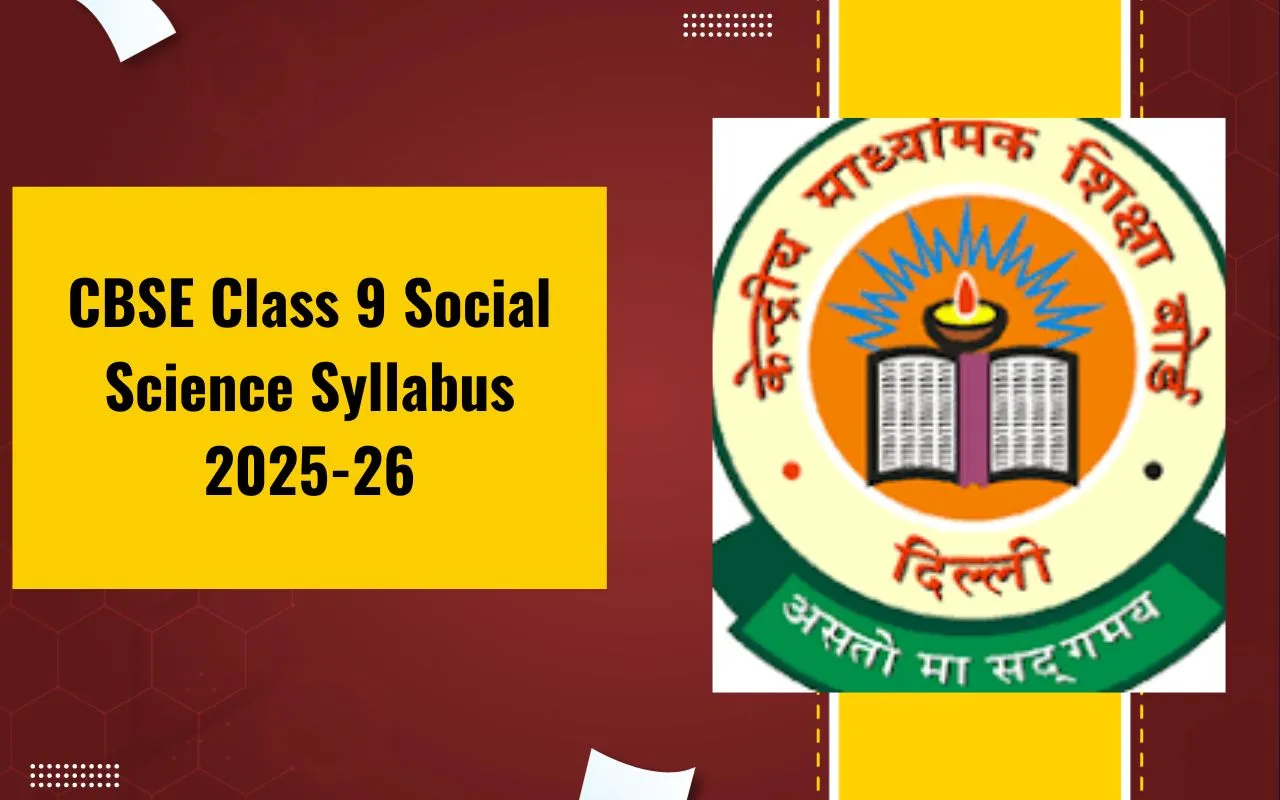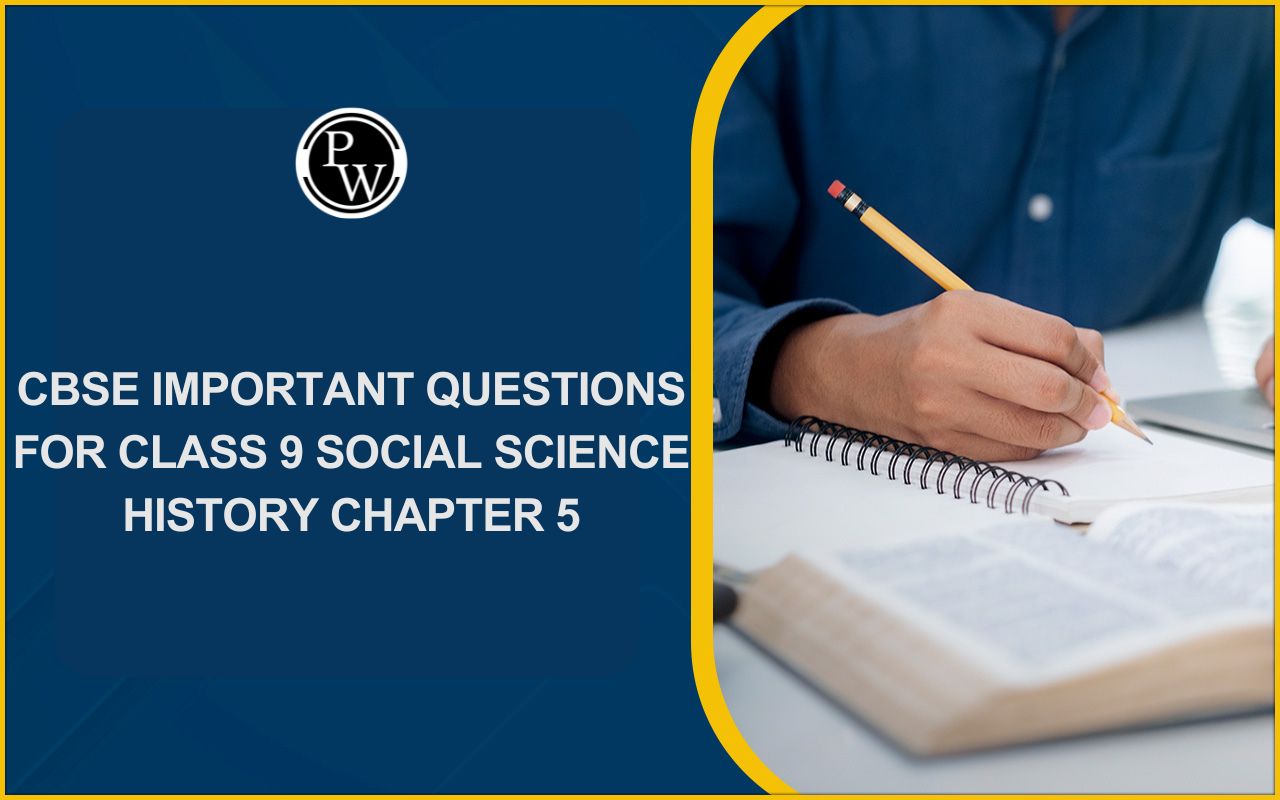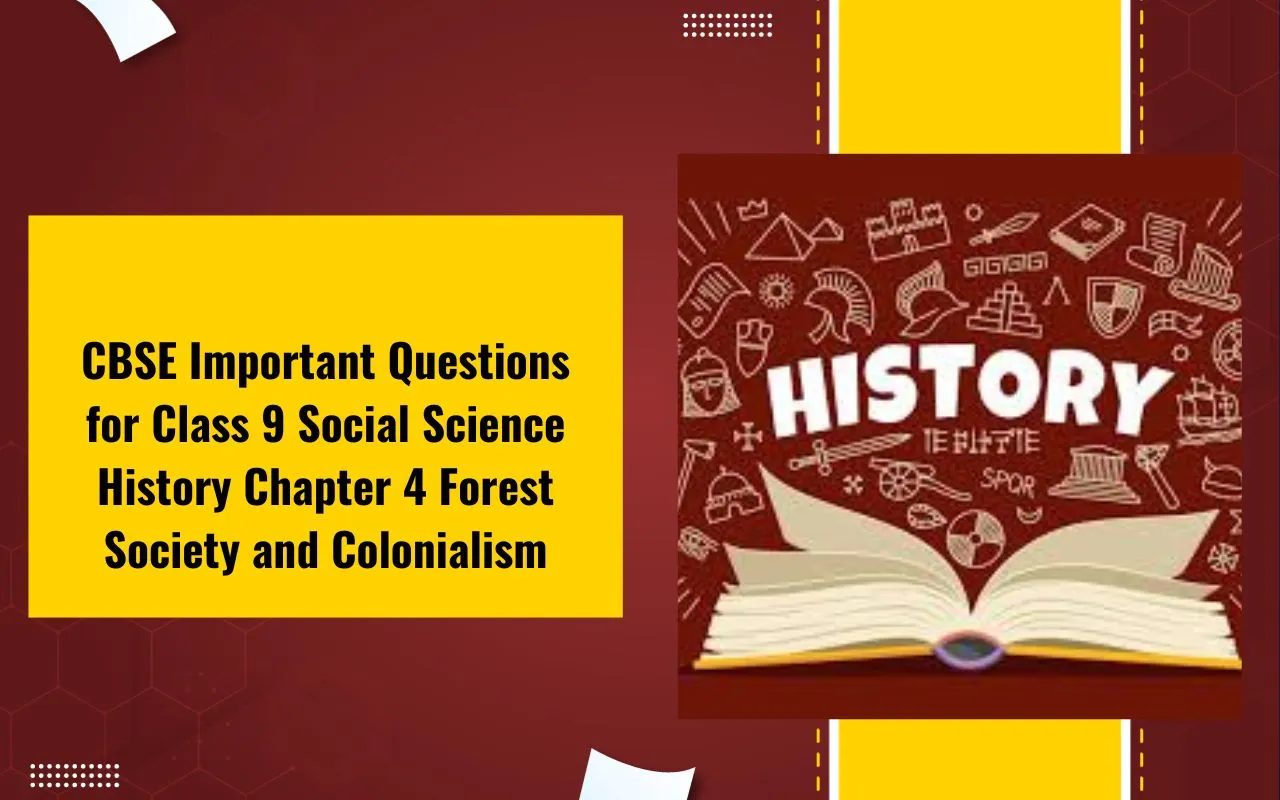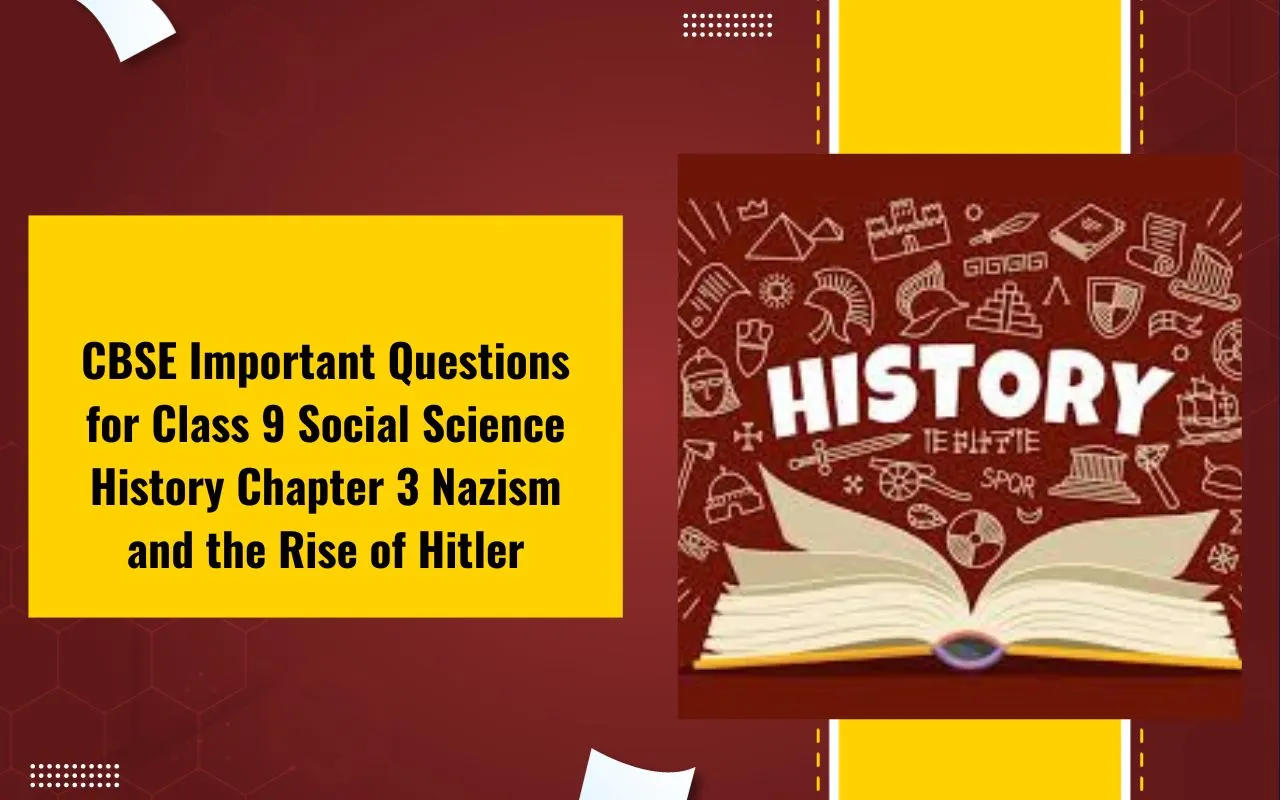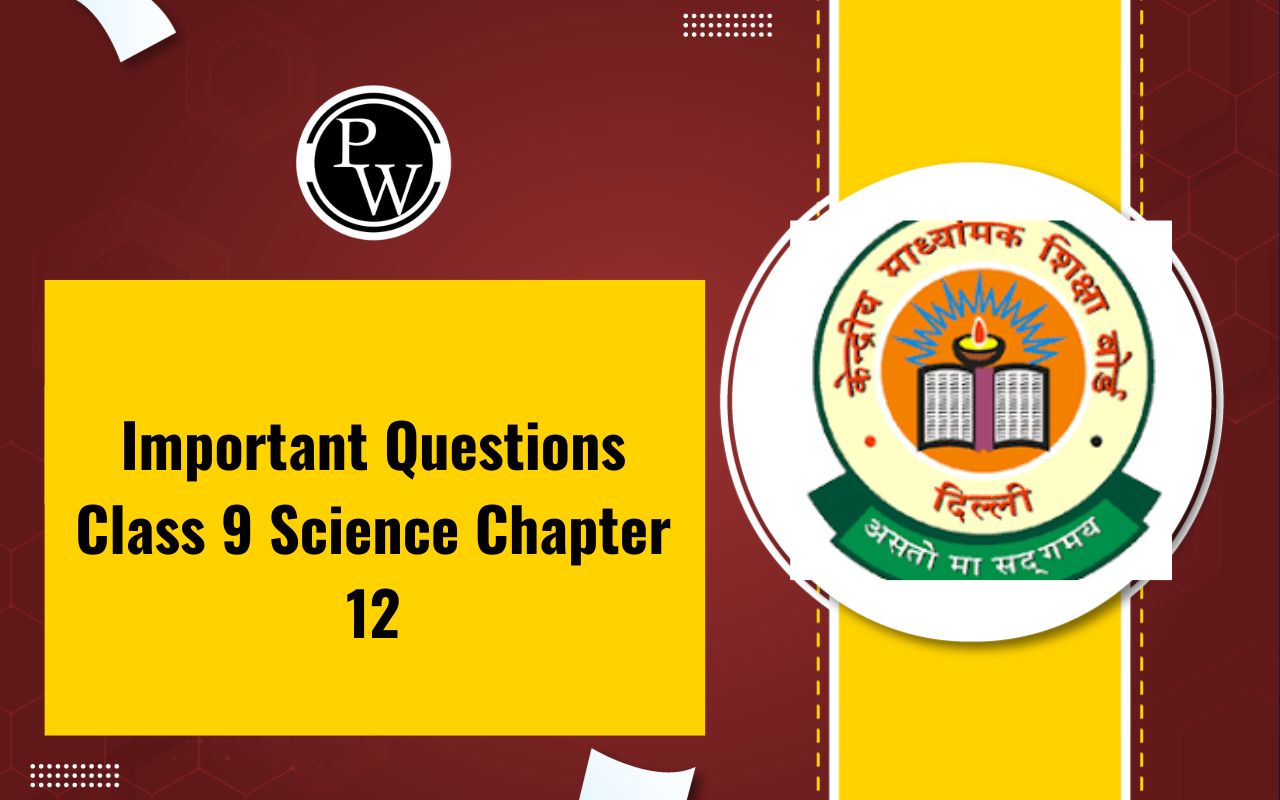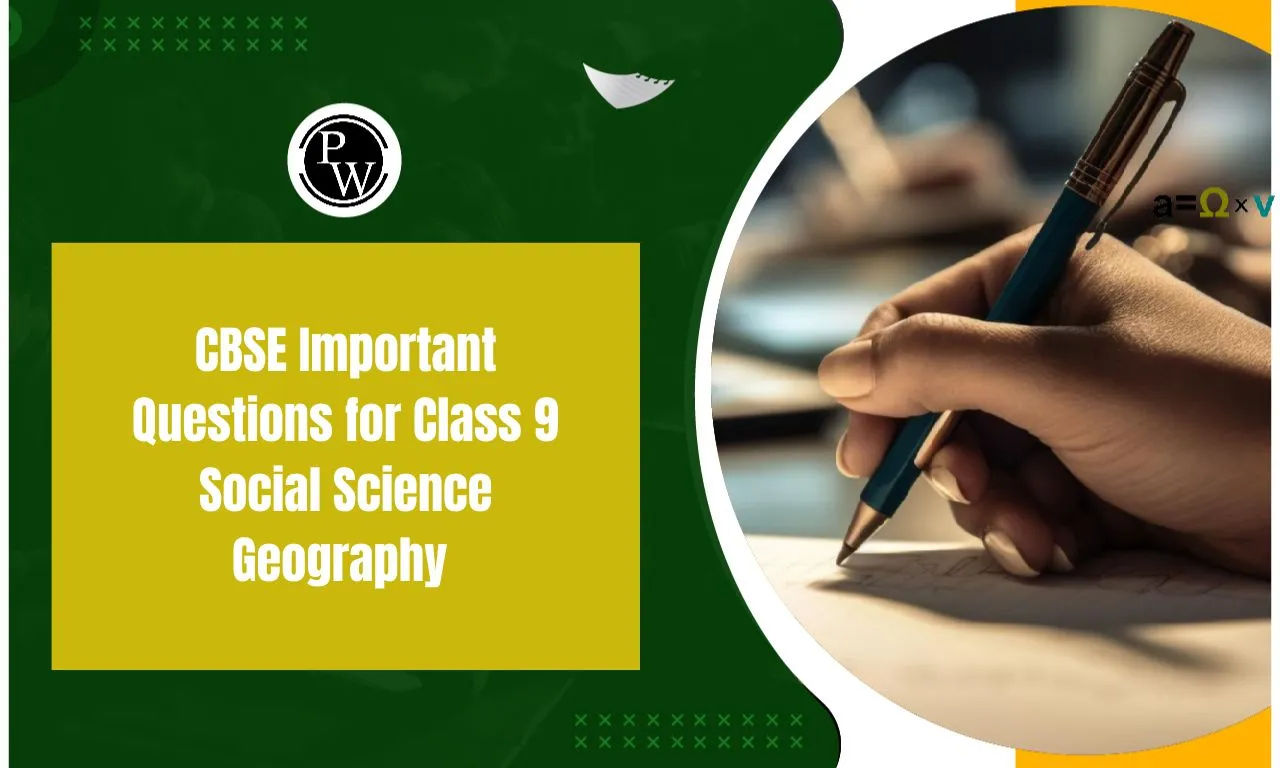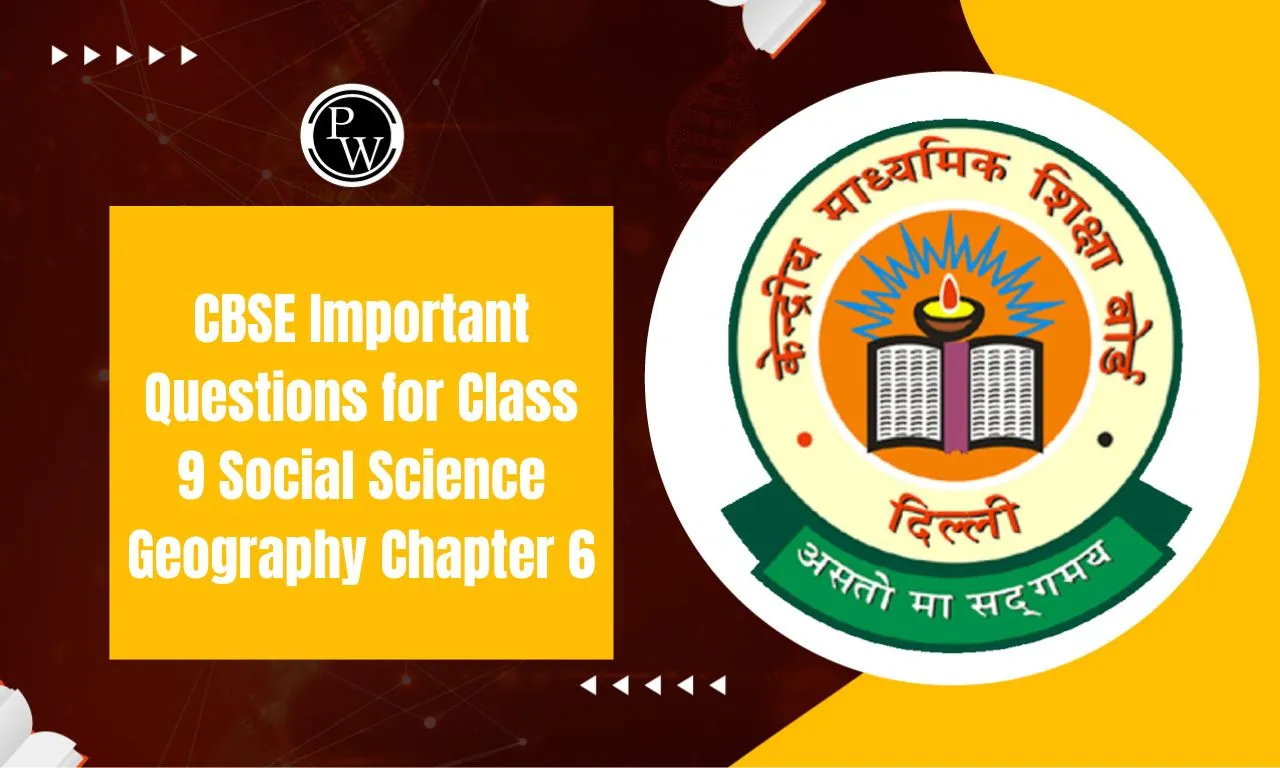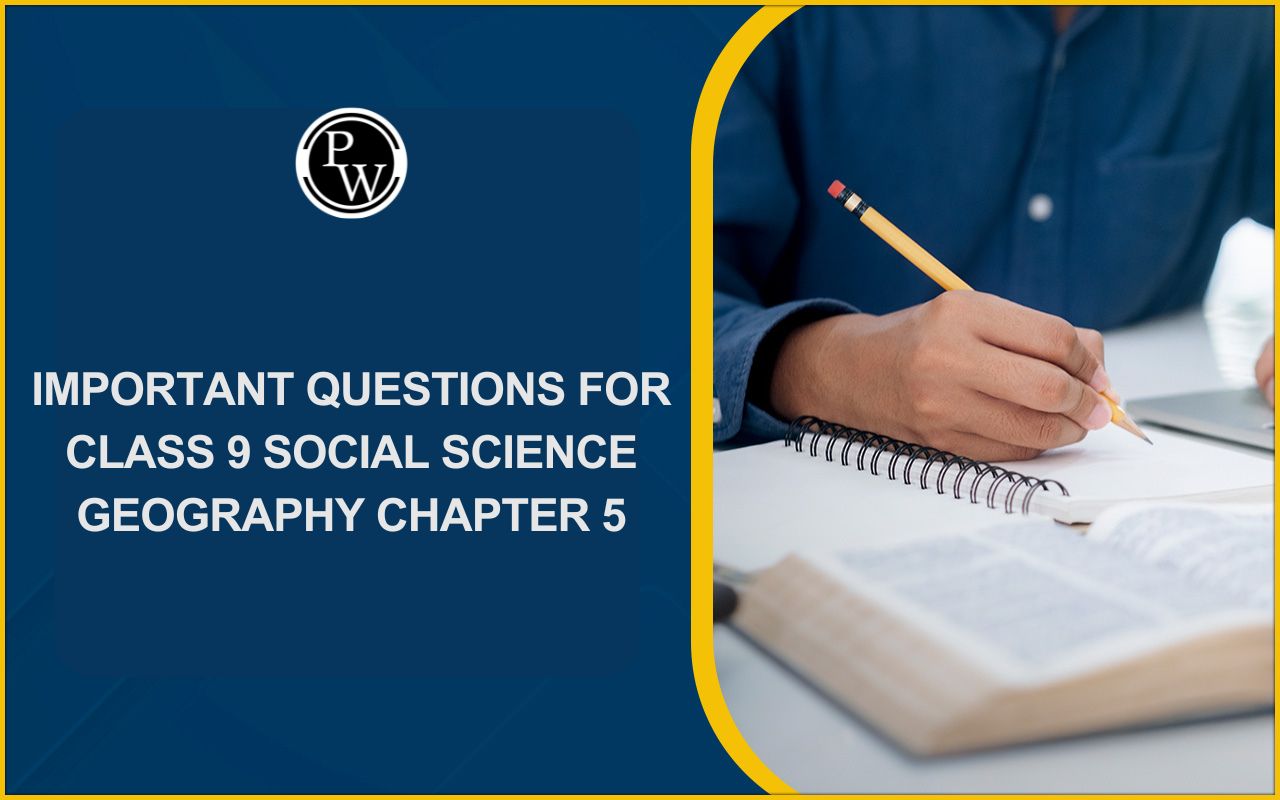
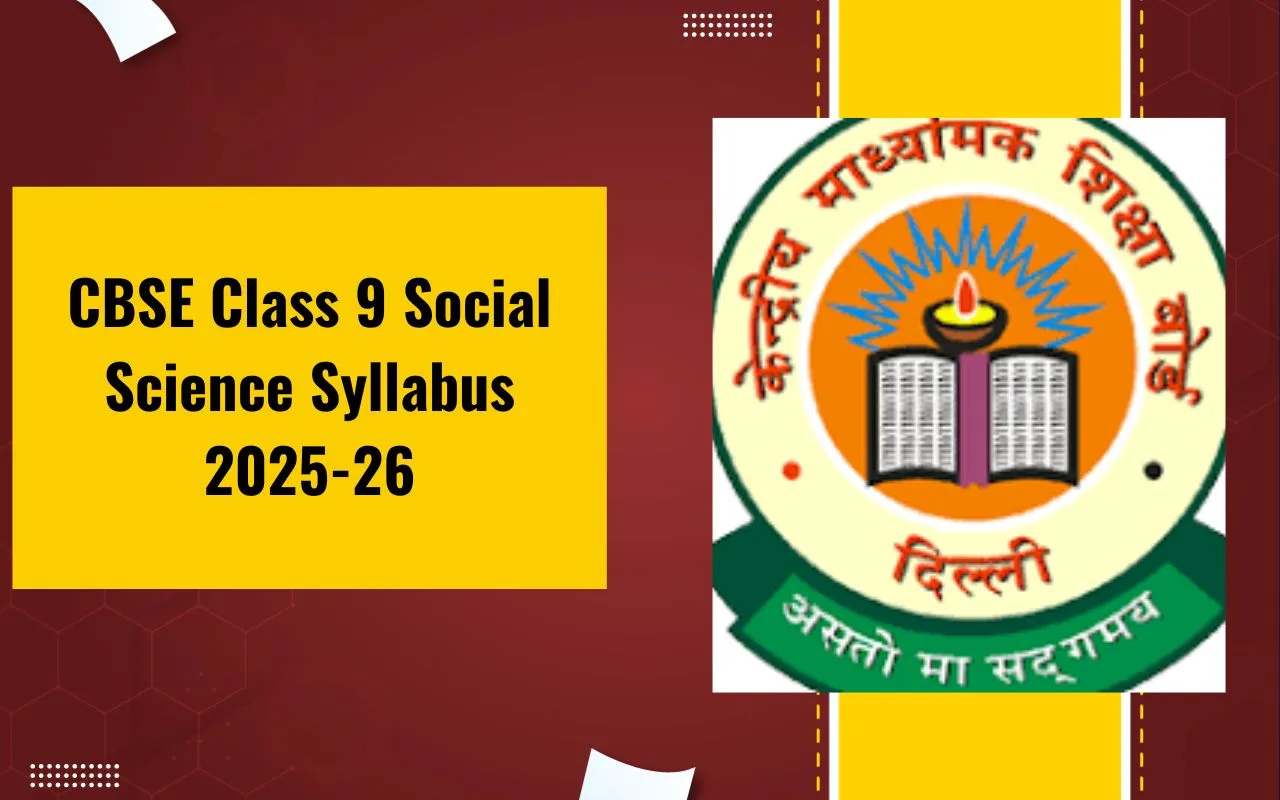
CBSE Class 9 Social Science Syllabus 2025–26: CBSE has released the Social Science syllabus for Class 9 for the academic year 2025–26. The syllabus includes subjects like History, Geography, Political Science, and Economics.
It is designed to help students understand important historical events, geographical concepts, political structures, and basic economic principles. The curriculum focuses on building analytical thinking, awareness of the world around us, and a strong foundation in social studies.
CBSE Class 9 Social Science Syllabus 2025-26
The Central Board of Secondary Education (CBSE) has released the Class 9 Social Science syllabus for the academic session 2025–2026. This comprehensive curriculum is divided into four main subjects:
|
CBSE Class 9 Social Science Syllabus 2025-26 |
|
|
Unit Name |
Chapter Name |
|
History (India and the Contemporary World-I) |
|
|
Geography (Contemporary India – I) |
|
|
Political Science (Democratic Politics – I) |
|
|
Economics |
|
CBSE Class 9 Social Science Syllabus Chapter Names
Within the tables presented subsequently, you will discover an outline of the chapter titles and associated subjects encompassed within the CBSE Class 9 Social Science Syllabus. It is strongly advised to refer to the NCERT Solutions CBSE Class 9 Social Science Syllabus textbook as it contains these chapters in a comprehensive manner.CBSE Class 9 Social Science Chapter 1 The French Revolution
The primary objective behind the incorporation of this particular chapter within the CBSE Class 9 Social Science Syllabus is to enable students to make a comparative analysis between the circumstances prevailing in France and those in India prior to the 1857 war.| CHAPTER 1 THE FRENCH REVOLUTION | |
| 1.1 | French society during the eighteenth century |
| 1.2 | The outbreak of the revolution |
| 1.3 | France abolishes monarchy and becomes a republic |
| 1.4 | Did women have a revolution? |
| 1.5 | Abolition of slavery |
| 1.6 | The revolution and everyday life |
CBSE Class 9 Social Science Chapter 2 Socialism in Europe and the Russian Revolution
The main purpose of including this chapter in the CBSE Class 9 Social Science Syllabus is to allow students to examine the circumstances that led to the emergence of the Russian and French revolutions. It also assists in assessing the factors that contributed to the development of Lenin's communism and Marxist Socialism.| CHAPTER 2 SOCIALISM IN EUROPE AND THE RUSSIAN REVOLUTION | |
| 2.1 | The age of social change |
| 2.2 | The Russian Revolution |
| 2.3 | The February Revolution in Petrograd |
| 2.4 | What changed after October |
| 2.5 | The global influence of the Russian Revolution and the USSR |
CBSE Class 9 Social Science Chapter 3 Nazism and the Rise of Hitler
The reason to include this chapter within the CBSE Class 9 Social Science Syllabus is to let its readers analyse the impact an individual could then pose on a nation. It also helps discuss the effect of Nazism on modern day politics.| CHAPTER 3 NAZISM AND THE RISE OF HITLER | |
| 3.1 | Birth of the Weimar Republic |
| 3.2 | Hitler's rise to power |
| 3.3 | The Nazi worldview |
| 3.4 | Youth in Nazi Germany |
| 3.5 | Ordinary people and the crimes against humanity |
CBSE Class 9 Social Science Chapter 4 Forest, Society and Colonialism
This chapter was included in the CBSE Class 9 Social Science Syllabus for interdisciplinary project works for evaluation by the teachers.| CHAPTER 4 FOREST, SOCIETY AND COLONIALISM | |
| 4.1 | Why deforestation? |
| 4.2 | The rise of commercial forestry |
| 4.3 | Rebellion in the forest |
| 4.4 | Forest transformations in Java |
CBSE Class 9 Social Science Chapter 5 Pastoralists in the Modern World
Incorporating this chapter in CBSE Class 9 Social Science Syllabus was done to study the onset of Nomadic society. It also briefly describes the relation of the modern economy with pastoralists.| CHAPTER 5 PASTORALISTS IN THE MODERN WORLD | |
| 5.1 | Pastor Nomads and their movements |
| 5.2 | Colonial rule and pastoral life |
| 5.3 | Pastoralism in Africa |
CBSE Class 9 Social Science Chapter 6 India – Size and Location
This chapter was included in the CBSE Class 9 Social Science Syllabus to examine India’s physical features as a nation and increase awareness about India for the students.| CHAPTER 6 INDIA | |
| 6.1 | Location |
| 6.2 | Size |
| 6.3 | India and the world |
| 6.4 | India's neighbours |
CBSE Class 9 Social Science Chapter 7 Physical Features of India
This chapter describes the various physical features of India to the students. It includes all the terrestrial features and geographical identities| CHAPTER 7 PHYSICAL FEATURES OF INDIA | |
| 7.1 | Major physiographic divisions: Himalayan Mountains, Northern Plains, Peninsular Plateau, Indian Desert, Coastal Plains, Islands |
CBSE Class 9 Social Science Chapter 8 Drainage
This chapter was introduced in CBSE Class 9 Social Science Syllabus to promote study of lakes and its significance in shaping Indian ecology.| CHAPTER 8 DRAINAGE | |
| 8.1 | Concept |
| 8.2 | Drainage Systems in India |
| 8.3 | The Himalayan Rivers - Ganga and Brahmaputra River System |
| 8.4 | The Peninsular Rivers - Narmada Basin, Tapti Basin, Godavari Basin, Mahanadi Basin, Krishna Basin, Kaveri Basin |
| 8.5 | Lakes |
| 8.6 | Role of Rivers in the Economy |
| 8.7 | River Pollution |
CBSE Class 9 Social Science Chapter 9 Climate
Incorporation of this chapter in Class 9 Social Science Syllabus was done to study the Indian climate, its factors and mechanisms.| CHAPTER 9 CLIMATE | |
| 9.1 | Concept |
| 9.2 | Climatic controls |
| 9.3 | Factors influencing India's climate: Latitude, altitude, pressure and winds |
| 9.4 | The seasons: Cold weather season, Hot weather season, Advancing moon Retreating/ Posts monsoons |
| 9.5 | Distribution of rainfall |
| 9.6 | Monsoon as a unifying bond |
CBSE Class 9 Social Science Chapter 10 Natural Vegetation and Wildlife
The teachers introduced this chapter for the purpose of grading the students' interdisciplinary project presented to them.| CHAPTER 10 NATURAL VEGETATION AND WILDLIFE | |
| 10.1 | Types of vegetation tropical evergreen forests, Tropical deciduous forests, Thorn Forests and Shrubs, Montane Forests, Mangrove Forests |
| 10.02 | Wildlife |
CBSE Class 9 Social Science Chapter 11 Population
This chapter helps to analyse the factors contributing to the uneven distribution of population in India, focusing specifically on the states of Uttar Pradesh (UP) and Rajasthan, as well as Mizoram and Karnataka.| CHAPTER 11 POPULATION | |
| 11.1 | Population size and distribution- India's population size and Distribution by numbers, India's population distribution by density |
| 11.2 | Population growth and processes of population change |
CBSE Class 9 Social Science Chapter 12 What is Democracy? Why Democracy?
This chapter was introduced in Class 9 Social Science Syllabus to thoroughly examine and analyze the functioning framework of the governments of India and North Korea.| CHAPTER 12 WHAT IS DEMOCRACY? WHY DEMOCRACY? | |
| 12.1 | What is democracy |
| 12.2 | Features of democracy |
| 12.3 | Why democracy |
| 12.4 | Broader meanings of democracy |
CBSE Class 9 Social Science Chapter 13 Constitutional Design
This chapter helps to gain a comprehensive understanding of the purpose of a constitution, which serves as a fundamental framework for governing a nation.| CHAPTER 13 CONSTITUTIONAL DESIGN | |
| 13.1 | Democratic constitution in South Africa |
| 13.2 | Why do we need a constitution |
| 13.3 | Making of the Indian Constitution |
| 13.4 | Guiding values of the Indian constitution |
CBSE Class 9 Social Science Chapter 14 Electoral Politics
This chapter helps to develop an understanding of the concept and mechanism of elections. It also helps in assessing the factors and circumstances that contribute to the democratic nature of elections in India.| CHAPTER 14 ELECTORAL POLITICS | |
| 14.1 | Why elections |
| 14.2 | What is our system of elections |
| 14.3 | What makes elections in India Democratic |
CBSE Class 9 Social Science Chapter 15 Working of Institutions
This chapter helps to analyse the roles, responsibilities, and interdependence of the three branches of government.| CHAPTER 15 WORKING OF INSTITUTIONS | |
| 15.1 | How is the major policy decision taken |
| 15.2 | Parliament |
| 15.3 | Political executive |
| 15.4 | The judiciary |
CBSE Class 9 Social Science Chapter 16 Democratic Rights
The inclusion of this chapter in CBSE Class Social Science Syllabus helps students recognize their rights as a citizen of a democratic nation.| CHAPTER 16 DEMOCRATIC RIGHTS | |
| 16.1 | Life without rights |
| 16.2 | Rights in a democracy |
| 16.3 | Rights in the Indian Constitution |
| 16.4 | Expanding scope of Rights |
CBSE Class 9 Social Science Chapter 17 Story of Village Palampur
The introduction of this chapter in CBSE Class 9 Social Science Syllabus was to assess the current agricultural situations in various states, providing justifications for the observed conditions.| CHAPTER 17 STORY OF VILLAGE PALAMPUR | |
| 17.1 | Overview |
| 17.2 | Organisation in production |
| 17.3 | Farming in Palampur |
| 17.4 | Non-farming activities in Palampur |
CBSE Class 9 Social Science Chapter 18 People as Resource
This chapter was introduced in CBSE Class 9 Social Science Syllabus to explore the diverse elements that contribute to the quality of a population. Evaluate the involvement of the government in enhancing the quality of the population.| CHAPTER 18 PEOPLE AS RESOURCE | |
| 18.1 | Overview |
| 18.2 | Economic activities by men and women |
| 18.3 | Quality of population |
| 18.4 | Unemployment |
CBSE Class 9 Social Science Chapter 19 Poverty as a Challenge
It helps to analyse the initiatives and actions implemented by the government to eliminate poverty.| CHAPTER 19 POVERTY AS A CHALLENGE | |
| 19.1 | Overview |
| 19.2 | Two typical types of property |
| 19.3 | Poverty estimates |
| 19.4 | Vulnerable groups |
| 19.5 | Interstate disparities |
| 19.6 | Global poverty scenario |
| 19.7 | Causes of poverty |
| 19.8 | Anti poverty measures |
| 19.9 | The challenges ahead |
CBSE Class 9 Social Science Chapter 20 Food Security in India
The introduction to this topic in CBSE Class 9 Social Science Syllabus helps to evaluate the significant importance of ensuring food security for the general population. It also justifies the reasoning behind the establishment of the food security system in India.| CHAPTER 20 FOOD SECURITY IN INDIA | |
| 20.1 | Overview |
| 20.2 | What is food security |
| 20.3 | Why food security |
| 20.4 | Who are food insecure |
| 20.5 | Food security in India |
| 20.6 | What is buffer stock |
| 20.7 | What is the public distribution system |
| 20.8 | Current status of public distribution system |
| 20.9 | Role of cooperatives in food security |
CBSE Class 9 Social Science Syllabus 2025–26 PDF Download
The Central Board of Secondary Education (CBSE) has released the cbse Class 9 syllabus for the academic session 2025–2026.
This comprehensive curriculum includes subjects such as History, Geography, Political Science, and Economics, aiming to provide students with a well-rounded understanding of social sciences.
The syllabus emphasizes analytical thinking, real-world applications, and a thorough grasp of historical events, geographical concepts, political systems, and economic principles. For detailed information and to download the syllabus, please refer to the PDF link provided below.
Do you need help with your homework or preparing for exams?
Study without using the internet
Preparation Tips for CBSE Class 9 Social Science
-
Understand the Syllabus: Go through the latest syllabus and focus on the weightage of each chapter. Prioritize chapters with higher marks.
-
Read NCERT Thoroughly: The NCERT textbook is your best guide. Read each chapter carefully and underline important points.
-
Make Short Notes: Create your own summary notes, flowcharts, and timelines for History, maps for Geography, and key terms for Political Science and Economics.
-
Practice Map Work: Regularly practice map-based questions in Geography and History. Learn the locations, rivers, mountain ranges, and key historical sites.
-
Revise Regularly: Revision is key. Keep a separate notebook for quick revision just before exams.
-
Solve Previous Year Questions & Sample Papers: Practice solving past years' questions and CBSE sample papers to get familiar with the exam pattern.
-
Use Flashcards for Definitions: Social Science includes many terms and concepts. Flashcards are a great way to memorize definitions.
-
Focus on Presentation: Write answers in points, underline keywords, and maintain neatness. For long answers, use subheadings wherever possible.
CBSE Class 9 Social Science Syllabus 2025-26 FAQs
What is the CBSE Class 9 Social Science Syllabus?
What topics are included in the CBSE Class 9 Social Science Syllabus?
How many chapters are there in the CBSE Class 9 Social Science Syllabus?
What is the prescribed textbook for the CBSE Class 9 Social Science Syllabus?

